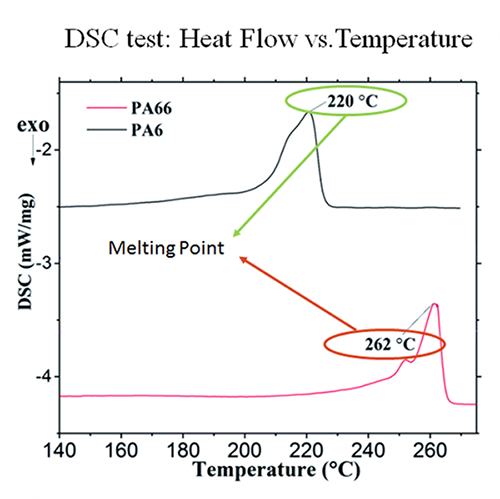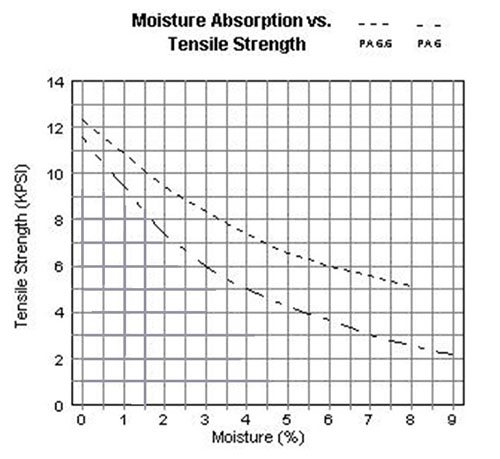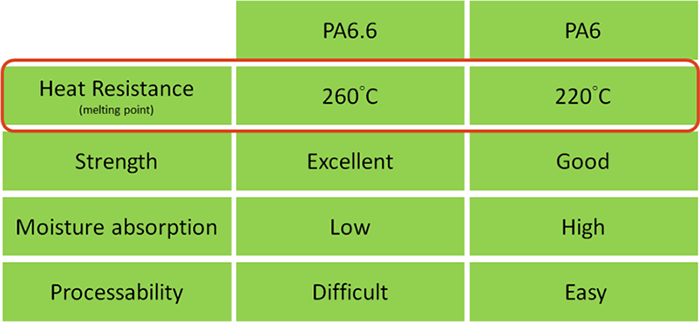GRASS YARN
When it comes to grass yarns, there are three materials you may hear often. They are PE, PP, and PA(Nylon). Basically, these are all plastics commonly used for making fibers. As a result of material properties, each type of yarn is applied to different fields. However, we are not going to go through all of them, but only focus on yarns used for golf driving range mats. And that's PA, aka Nylon or polyamide. As PE could be classified into HDPE, LDPE, MDPE .etc, different types of PAs are also being developed and created. Among them, PA6.6 and PA6 are the two most widely used yarns for golf driving range mats nowadays. For the past few years, I have been dedicated to promoting that PA6,6 yarns have the best performance. But what are really the differences?
Heat Resistance:
The most important property is PA6.6's higher melting point. Compared with melting point of PA6, which is around 220°C, PA6,6's thermal resistance can reach to above 260°C. In fact, this property makes big difference because every time your iron club head hits on golf driving range mats, instantaneous heat temperature can reach to extremely high. Consequently, this heat resistance of PA6.6 really makes NAGIC golf driving range mats more strong after long-time using. The chart below shows PA6 starts to melt at 220°C, where P6.6 doesn't have any physical change until 262°C.**The chart is from RSC Advances, an international journal to further the chemical sciences.

Strength & Moisture Absorption:
Even though the chemical structures of PA6.6 and PA6 are similar with excellent strength and stiffness, PA6.6's double-six-carbon-atom structure still gives it a little advantage. Specifically speaking, PA6.6 absorbs less moisture than PA6 does. But why this matters? It's because it affects the strength and texture of yarns as used in humid environment. The chart below shows how PA6.6 and PA6's tensile strength loses in higher moisture surroundings. However, PA6.6 always stay stronger and performs better in different moisture rates. **The research is done by Intech Corporation, specializing in plastic engineering.

Processability:
Though PA6.6 turns out to be a better material for grass yarns, it's also more difficult to be processed and colored due to its heat resistance property. So there aren't many vendors who supply PA6.6 yarns, especially for artificial turf use. Differences between PA6.6 and PA6 are summarized as below:

Last but not least, why does PA become the main yarn material for golf mat? The answer is also its high melting point. The melting points of PE and PP are only around 125°C to 150°C. If you ever bought cheap golf mats, using PE/PP yarns, you might experience that after a few shots, grass yarns would be melted and stick on your club head and those mats wore quickly. As the market develops, there are fewer and fewer vendors using cheap PE/PP yarns for golf mats.